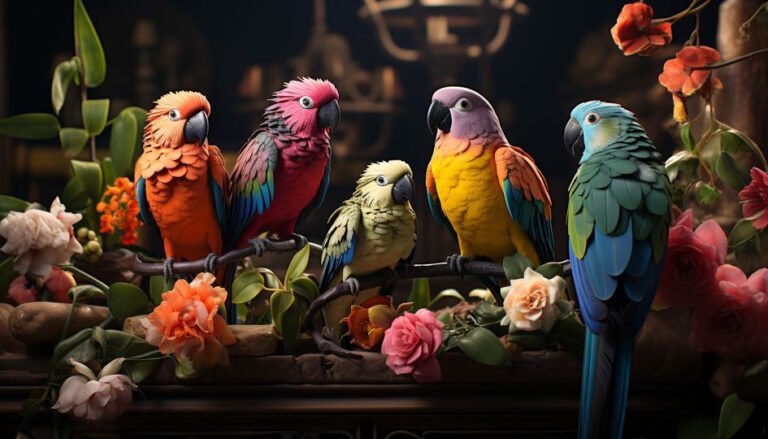
Every year, new false stories spread, and some (misinformed) people re-publish and share some mythical false stories.
Examples of false stories
The story of the ababil bird:
Some people work to link his stories to religious stories (if you oppose his “false” story, you are opposing the true religion.) The story of a Turkish man finding the ababil bird (is constantly republished), and the truth is that the poor bird is nothing but (the common swift), and the word ababil does not describe a type of animal. Birds, in fact, their lexical meaning in language dictionaries is ((ababil: groups of birds, and its singular word is ibal)).
The falcon regaining its youth:
The story of the falcon regains its youth after reaching the age of (40 years) by plucking its feathers, breaking its claws and beak, and secluding itself for five months in its nest, waiting for the feathers, claws, and beak to grow. After the end of seclusion, it soars in the sky as if it had been born again, and then lives for an additional 30 years, until it reaches the age of 70. Years) The truth is that the average lifespan of falcons in the prairies is from (10 to 20 years), and the falcon lives a normal life as a fledgling, then a juvenile, then a mature person, enjoying the vitality of youth, until it grows old and dies.
The story of a female Vulture choosing her mate:
You will most likely find the author of this story’s video using images of vultures even though he is talking about eagles (in order to ensure the spread of as much falsehood and ignorance as possible). The story says that a female eagle flies high and carries a stick from a tree branch, and when the male eagles gather around her, she throws the stick. She watches who can catch it, and repeats this process over and over again, and the male who keeps bringing her back is chosen as a mate. The lesson in this behavior is to show the wisdom and dedication of the mother in choosing a strong father capable of caring for the chicks in the future, as he must catch the young eagles when they fall while learning Flight (God willing, the female eagle has a master’s degree in future strategic planning), and the truth is that this is nothing but a false story because flight behavior is an innate, instinctive behavior, just as cats grow up and begin moving, then walking, then running, so eagles grow up and begin to exercise and move their wings, then they try to fly. A small bird travels less than a meter above the nest… and when it feels the strength in its wings, it begins to fly like all small birds, such as sparrows, and large ones, such as ducks, geese, swans, owls, and raptors.
The story of the lion Scarface:
Rumors are spreading about the famous lion that he was ruling entire countries, and when he died, many animals gathered, and all the female lions cried for him… The truth is that he died alone, and his last moments were photographed by my dear friend (Mustafa Al-Barulsi), a wildlife photographer who resides in Kenya as part of his environmental tourism project. The distinguished (Talek bush camp)
Why are fake and mythical stories more prevalent than true and scientific stories regarding birds and wildlife?
Fake stories about birds and wild animals often spread more widely than real stories and scientific information for several reasons:
- Emotional Appeal:
– Fake stories are often crafted to evoke strong emotions such as wonder, fear, or amusement. This emotional appeal makes them more likely to be shared.
- Novelty and Sensationalism:
– Sensational and unusual stories capture people’s attention more easily than straightforward scientific facts. People are naturally drawn to the unexpected and extraordinary.
- Virality on Social Media:
– Social media algorithms tend to prioritize content that generates engagement, such as likes, shares, and comments. Fake stories, being more sensational, often generate more engagement and are thus more likely to be promoted by these algorithms.
- Confirmation Bias:
– People are more likely to believe and share stories that confirm their preexisting beliefs or biases. Fake stories can be tailored to fit these biases more easily than factual, scientific information.
- Lack of Critical Thinking and Scientific Literacy:
– Many people lack the critical thinking skills and scientific literacy needed to distinguish between credible and non-credible sources. This makes them more susceptible to believing and sharing fake stories.
- Simplification and Accessibility:
– Fake stories are often simpler and more accessible than detailed scientific explanations. They can be quickly consumed and understood without requiring background knowledge or effort.
- Entertainment Value:
– Fake stories often serve an entertainment purpose, making them more enjoyable to read and share. In contrast, scientific information may be perceived as dry or complex.
- Economic Incentives:
– Some websites and content creators spread fake stories to attract clicks and generate ad revenue. Sensational content is more likely to drive traffic than factual reporting.
- Echo Chambers:
– Online communities and social media can create echo chambers where misinformation spreads unchecked. In these environments, fake stories can gain traction quickly because they are continually reinforced by like-minded individuals.
- Information Overload:
– In the age of information overload, people often skim content and may not take the time to verify its accuracy. This makes it easier for fake stories to spread unchecked.
To combat the spread of fake stories, it is important to promote scientific literacy, encourage critical thinking, and create engaging ways to communicate scientific information that can compete with the allure of sensationalism.






